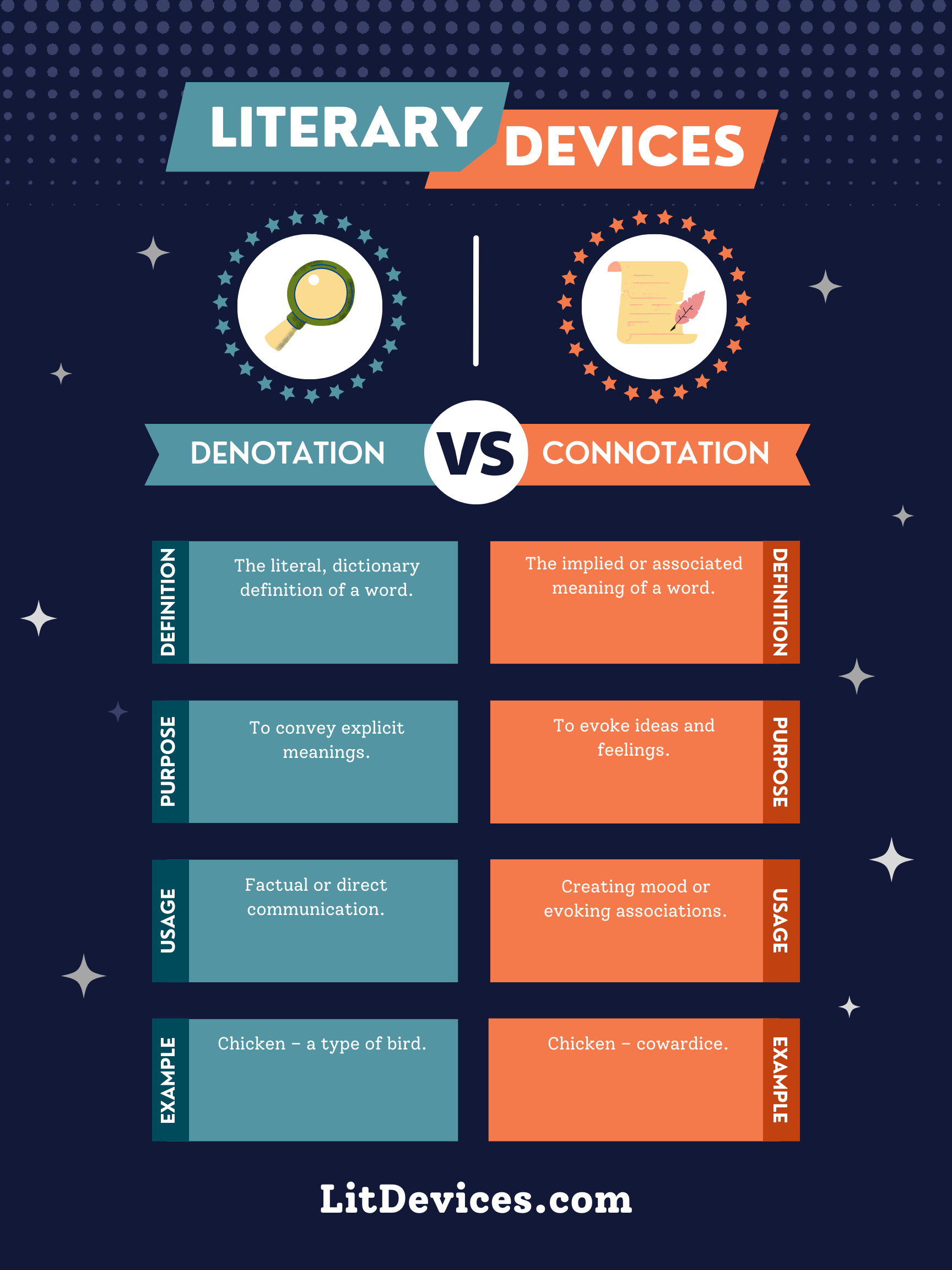Denotation is the literal, dictionary definition of a word; Connotation involves the emotional or cultural associations with that word beyond its literal meaning.
Denotation 📖
Denotation refers to the literal meaning of a word, the “dictionary definition.” It’s the straightforward, no-frills meaning that doesn’t change in different contexts. For example, the denotation of “snake” is simply a reptile with a long, slender body and no limbs.
Connotation 🌈
Connotation, on the other hand, dives deeper into the feelings, associations, or emotions a word evokes beyond its denotation. The word “snake” can have a negative connotation, often used to describe a person who is treacherous or deceitful, tapping into cultural or emotional associations that extend beyond its literal meaning.
Summary
| Literary Device | Definition | Purpose | Usage | Relevant Examples |
|---|---|---|---|---|
| Denotation | The literal, dictionary definition of a word. | To convey clear, direct meanings in communication. | Used in all forms of writing for clarity and precision. | “Chicken” as a bird. |
| Connotation | The emotional, cultural, or associative meanings beyond the literal definition. | To evoke specific feelings or ideas in the reader. | Predominantly used in poetry, fiction, and persuasive writing. | “Chicken” implying cowardice. |
Writing Tips
When weaving denotation and connotation into your writing, consider the following:
- For Denotation: Strive for precision and clarity, especially in academic or formal writing. Ensure your word choices accurately convey the information or facts you are presenting. For instance, when describing a “rose,” focus on its botanical aspects to maintain denotative clarity.
- For Connotation: Tap into the emotional and cultural layers of your words to enrich your storytelling or persuasive writing. Choosing words with strong connotations can deeply affect your audience’s feelings and perceptions. Describe a “rose” as a symbol of love or passion to evoke specific associations.
FAQs
Q: Can a word have multiple connotations?
A: Yes, a word can carry several connotations, varying by cultural, emotional, or personal context.
Q: Is denotation more important than connotation?
A: Neither is more important; their relevance depends on the writer’s purpose. Denotation is crucial for clarity and accuracy, while connotation is key for evoking emotions and creating depth.
Q: How can I choose the right connotation for my writing?
A: Consider your audience and the emotional tone or message you wish to convey. Choose words whose connotations align with your desired impact.
Exercise
Read the paragraph below and identify the denotation and connotation of the word “light”:
“In the dim room, the light from the lamp was the only source of illumination, casting a warm glow that made the space feel cozy and inviting.”
Answers:
- Denotation: “Light” as the illumination from the lamp.
- Connotation: “Light” conveys a sense of warmth, comfort, and welcome.
Other Device Comparisons You May Find Interesting
- Symbolism vs Metaphor: Exploring the power of representation vs. direct comparison.
- Irony vs Satire: Delving into the nuances of critique and humor.
- Imagery vs Sensory Details: Comparing the creation of vivid scenes through language.
- Tone vs Mood: Differentiating the author’s attitude from the emotional atmosphere.
This exploration into Denotation and Connotation offers a glimpse into the depth and complexity of language, showcasing the importance of choosing words with care to craft meaningful and impactful writing.

